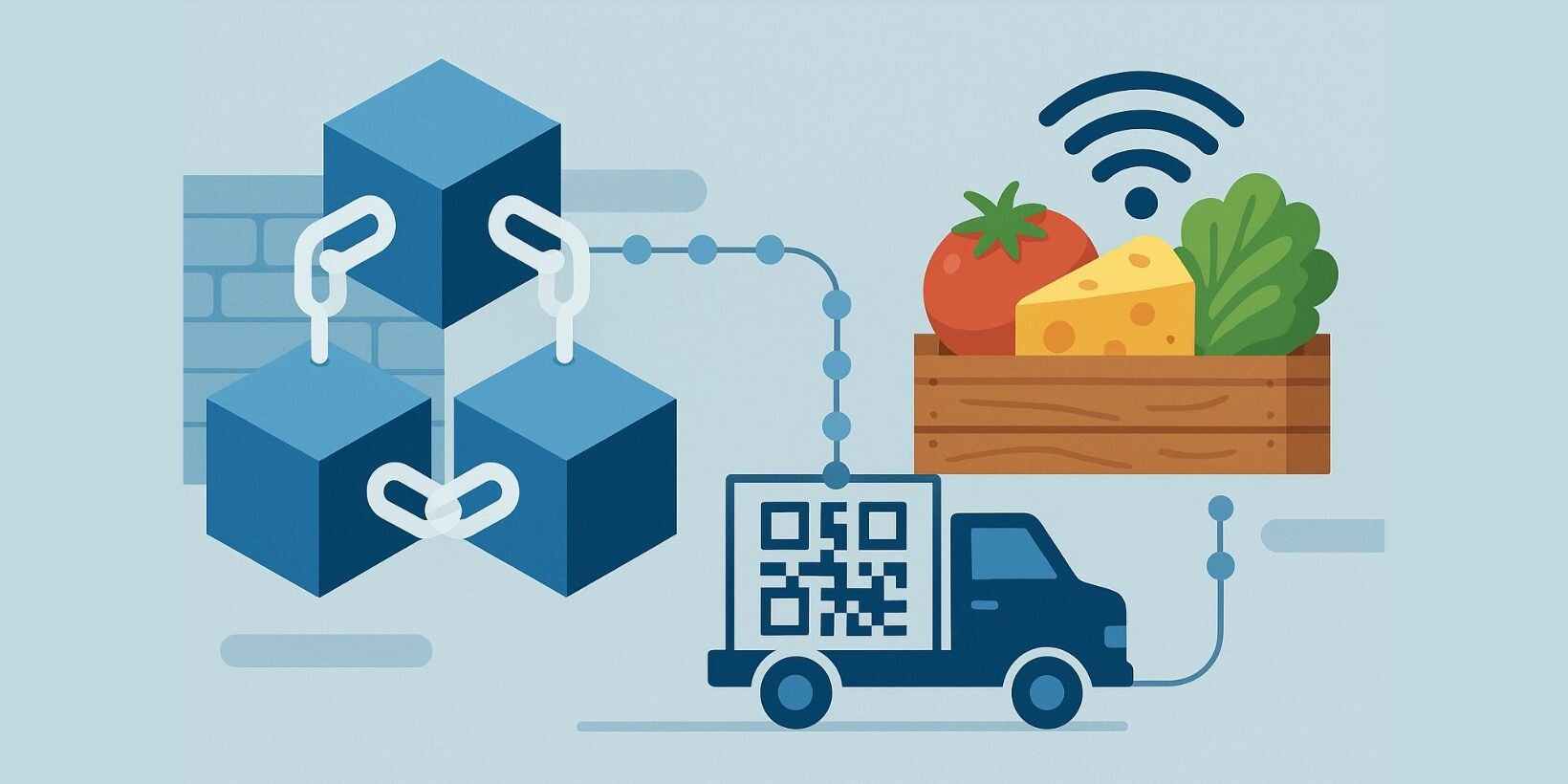Blockchain and IoT: the new era of food traceability

The food industry is undergoing an unprecedented transformation driven by technologies such as Blockchain and the Internet of Things (IoT). The need to ensure food safety, supply chain transparency, and consumer confidence has never been higher.
In this scenario, Blockchain and IoT in food traceability enable secure, real-time tracking from origin to point of sale. These technologies not only increase operational efficiency and market confidence but also help to comply with increasingly strict European food regulations.
What is digital food traceability, and why is it key today?
Food traceability involves tracking every stage of a product, from production and transportation to distribution and sale. Traditionally, this process relied on manual records or fragmented systems that generated errors and reduced transparency.
With digital traceability systems:
- IoT sensors capture real-time data in the plant and throughout the logistics chain.
- Blockchain technology stores this information in immutable and decentralized records, ensuring transparency and security.
Blockchain in the food industry: key advantages
Immutable records and Complete transparency
Each production batch is recorded on the blockchain, creating an inviolable history and boosting food supply chain transparency.
Food Fraud Prevention
Blockchain in food fraud prevention enables the detection of tampering, counterfeiting, or ingredient substitution, protecting both brands and consumers.
Faster regulatory compliance and audits
Blockchain simplifies the verification of regulations such as IFS, BRC, and ISO 22000, reducing audit times and costs.
Boosting Consumer Confidence
Consumers can scan a QR code and instantly verify the origin, quality, and processes behind the food they purchase, enhancing trust and brand reputation.
IoT and Food Traceability: Real-Time Data from Farm to Fork
Control of critical parameters
IoT sensors monitor temperature, humidity, storage, and transport conditions. Data is automatically stored on the blockchain, ensuring accuracy, integrity, and availability.
Immediate incident response
If a batch has a contamination problem, IoT + Blockchain systems allow the product to be located and recalled in minutes — not weeks.
Seamless Integration with MES and ERP
- MES = in-plant control (real-time production).
- ERP = administrative and logistics management.
- IoT + Blockchain = total, secure, and reliable food traceability.
Real-World Use Cases of Blockchain and IoT in the Food Supply Chain
- Dairy and fresh produce: temperature and shelf life control to avoid shrinkage.
- Meat: certification of origin and fight against fraud in labeling.
- Beverages: full traceability for export and sanitary control.
- Retail: consumer confidence with accessible information at the point of sale.
Challenges of Food Traceability with Blockchain and IoT
Technical challenges
- Scalability of the blockchain for large transaction volumes.
- Interoperability between different blockchain platforms.
- Reliability of source data (IoT ensures veracity).
Economic and environmental considerations
- Initial implementation costs.
- ROI: reduction in product recalls and savings in audits usually justify the investment in less than 18 months.
- Environmental impact: the need for sustainable blockchain solutions (Proof of Stake vs. Proof of Work).
The combination of Blockchain and IoT in food traceability marks the beginning of a new era in the industry. A digital, secure, and transparent ecosystem that protects the consumer, strengthens the brand, and ensures regulatory compliance.
For companies seeking to lead in Industry 4.0, adopting these technologies is not optional — it is a strategic necessity.
Do you want to improve the traceability of your plant?
Request a free INEXION demo and start your path to 100% reliable and transparent traceability today.
.png?width=501&height=92&name=Overtel%20Logo%20Postivo%20(7).png)
.jpg)
.jpg)